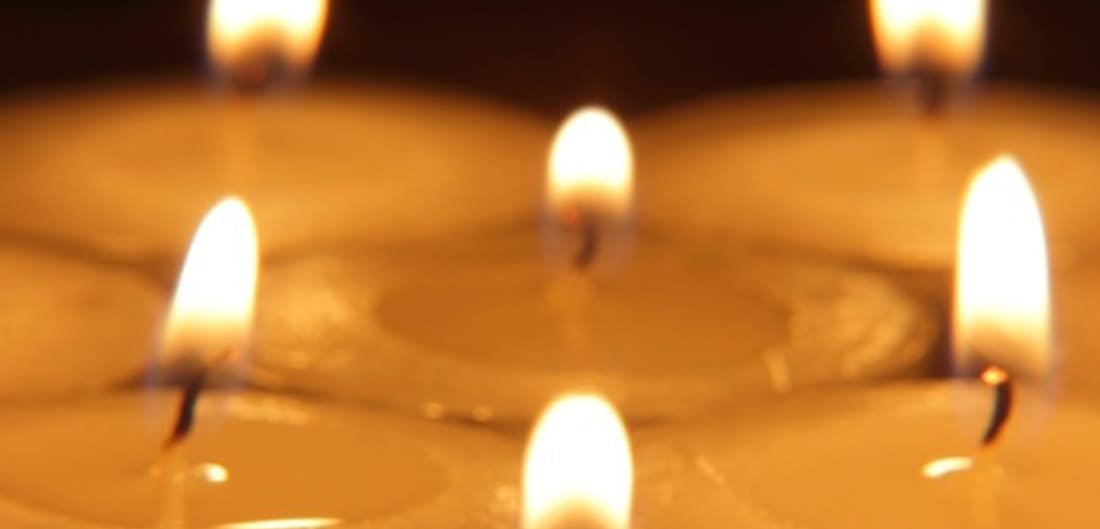
From pumpkin spice to winter pine to strawberry shortcake, there are a plethora of candle scents to choose from—not to mention the endless styles candles come in.
Whatever your go-to candle is, now is definitely the season to burn it. But did you know candles are the culprit of 7,610 home fires each year?* December is the peak month for candle fires, with January being a fast follower. These fires cause an annual average of 81 deaths, 677 fire injuries, and $278 million in direct property damage.
So, while it might seem like a no-brainer, make sure to follow these safe candle practices.
Candle Safety Tips for the Holidays
- Stay close by. Never leave a candle unattended. If you notice your candle has a high, flickering flame, it’s time to extinguish it.
- Watch kiddos and pets. Keep candles away from small children and pets. And don’t leave a child asleep beside a candle. (And, of course, keep the lighters way out of reach.)
- Clear some space. Be sure to place candles on an uncluttered, sturdy surface—and make sure it’s heat-resistant. Any candle in a holiday décor item (even a votive) should not be near anything else that could catch fire.
- Move flammable items. Keep candles at least one foot away from other materials or items while burning. Three out of five candle fires start when flammable items are too close to a burning candle.
- Always trim the wicks. Long or warped wicks are more likely to burn unevenly, drip or flare up. Purchase a wick trimmer and keep wicks trimmed to ¼” for optimal candle use. (Pro tip: Wick trimmers retail between $10-15, so they won’t break the bank!)
- Read the label. Pay attention to the manufacturer’s recommendations for burn time and proper use. Every candle is different – some get too hot after a few hours. No sticker with instructions? Then seriously reconsider purchasing or using that candle. If it doesn’t meet labeling standards, it probably doesn’t meet other important fire safety standards.
- Dip that wick. Consider purchasing a wick dipper (only a few bucks), you’ll prevent hot wax from splattering and also keep your wick protected, while eliminating the huge puff of black smoke you get when you just blow it out.
- Know when it’s time to toss. Don’t burn a candle to the very end of its life. Burning your candle all the way down is a fire hazard. Instead, pitch it when there’s two inches of wax left in a freestanding candle or ½” in a container candle. A lot of higher-end candles burn out on their own, but don’t count on it.
- Invest in quality. Avoid buying cheap candles – a lot of times they don’t last and aren’t even very fragrant after a few burns, anyway. Pay attention to the width of the candle and the number of wicks. For example, a three-wick candle that is too small in diameter can burn way too fast and create a bigger flame. A wide candle with only has two wicks, might not burn evenly, either. Bottom line: you get what you pay for.
- Go flameless! Consider alternatives to traditional candles: flameless candles, pod warmers or plug ins. Today’s flameless models look incredibly real, and some even have scents. Another option is using a scent warmer which uses a pod of wax, rather than a hot flame. Some are electric and some plug into your outlet. Again, always follow the manufacturer’s instructions on these items.
Candles can give your holiday or event that special spark it needs, but when opting for a real candle, make sure you and your family take the proper precautions. And talk to your ERIE agent to ensure you have adequate coverage for your home and everything in it.
*Based on 2014-2018 annual averages from the National Fire Protection Association.

A better insurance experience starts with ERIE.
Haven’t heard of us? Erie Insurance started with humble beginnings in 1925 with a mission to emphasize customer service above all else. Though we’ve grown to reach the Fortune 500 list, we still haven’t lost the human touch.
Contact Barefoot Insurance Group today to experience the ERIE difference for yourself.

